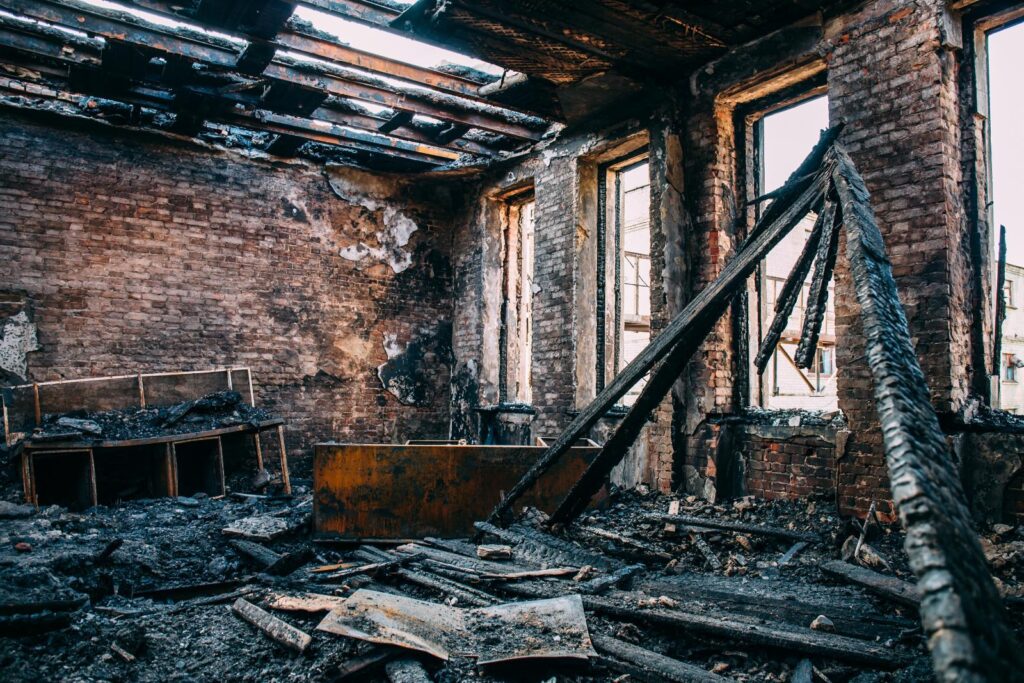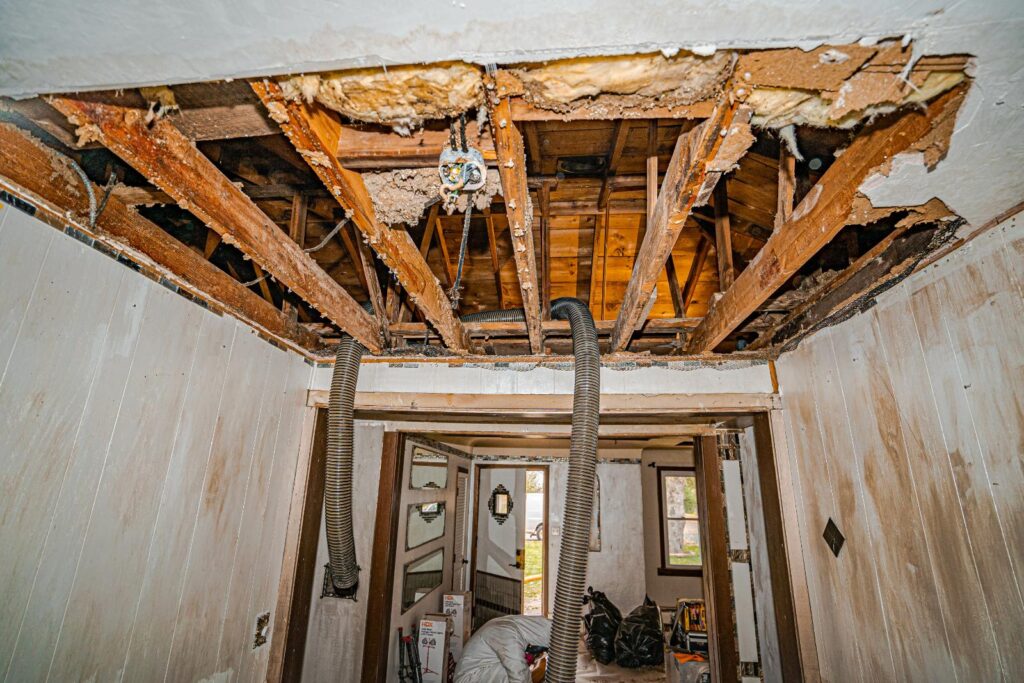
Contents
Most homeowners underestimate the impact of humidity on mold growth, often thinking it only thrives in damp environments. However, even slightly elevated humidity levels can create the perfect breeding ground for mold. By taking proactive measures, you can significantly reduce the risk without breaking the bank. If you’re curious about effective, cost-efficient strategies to tackle this issue, you might be surprised by some simple solutions that could make a big difference in your home’s air quality and overall health. Let’s explore those practical tips that can help you regain control over your living space.
Key Takeaways
- Inspect moisture-prone areas regularly and seal leaks with caulk or weather stripping to prevent mold growth.
- Use white vinegar or a vinegar-baking soda mixture as a cost-effective mold cleaning solution.
- Improve ventilation by opening windows, installing exhaust fans, and using dehumidifiers to reduce humidity levels.
- Establish a routine cleaning schedule that includes inspecting for mold and maintaining optimal indoor humidity between 30% and 50%.
- Regularly maintain HVAC systems and use fans to enhance air circulation, discouraging mold spores from settling.
Identify Mold Sources
Many homeowners overlook the hidden sources of mold lurking in their spaces. To effectively combat mold, you need to recognize where it commonly resides and employ effective mold identification techniques.
Start by inspecting areas prone to moisture, such as bathrooms, kitchens, and basements. Pay close attention to areas around sinks, pipes, and windows, as these spots are particularly susceptible to mold growth.
Common mold types include Aspergillus, Cladosporium, and Stachybotrys, often referred to as black mold. Each type thrives in specific conditions, so understanding their characteristics aids in identifying potential problems.
For instance, Aspergillus is often found on damp surfaces, while Cladosporium prefers cooler environments. Knowing these distinctions can help you pinpoint your mold sources faster.
Use your senses to detect mold presence. Look for visible discoloration or fuzzy growth on surfaces, and be mindful of any musty odors. These signs often indicate mold infestation, prompting further investigation.
You might also consider using moisture meters to check humidity levels in various parts of your home; high humidity can signal an environment conducive to mold growth.
Once you’ve identified potential sources, you can take actionable steps towards remediation. By understanding mold identification techniques and familiarizing yourself with common mold types, you empower yourself to maintain a healthier, mold-free living space.
This proactive approach not only enhances your home’s safety but also fosters a sense of belonging and well-being for you and your family.
Use Vinegar Solutions
Using vinegar solutions is an effective way to tackle mold removal without breaking the bank.
Not only is vinegar a safe option for household applications, but it also offers a cost-effective cleaning solution that can be found in most kitchens.
Effective Mold Removal
Vinegar solutions are a powerful and budget-friendly option for effectively removing mold from surfaces in your home. White vinegar contains acetic acid, which can kill up to 82% of mold species, making it an ideal choice for mold remediation.
To use vinegar for effective cleaning, simply spray undiluted vinegar on the affected area and let it sit for at least an hour. Afterward, scrub the surface with a brush to dislodge any remaining mold.
Incorporating vinegar into your mold prevention strategies can significantly reduce future outbreaks. Regularly cleaning areas prone to moisture, such as bathrooms and kitchens, with a vinegar solution not only removes existing mold but also deters new growth.
Remember, effective cleaning techniques involve addressing the source of moisture; ensure proper ventilation in your home to keep humidity levels down.
For stubborn mold, repeat the process as necessary, and consider combining vinegar with baking soda for enhanced cleaning power.
Safe Household Application
Apply vinegar solutions with caution to ensure a safe and effective mold remediation process in your home. Vinegar, a natural antifungal and antibacterial agent, can be an excellent tool in your mold-fighting arsenal. When using vinegar, opt for white distilled vinegar, which is both affordable and effective.
Start by mixing a solution of one part vinegar to one part water in a spray bottle. This concentration retains the cleaning power while being gentle on surfaces. Always test the solution on a small, inconspicuous area to ensure it won’t damage your materials.
When applying vinegar, wear gloves and a mask to protect against potential allergens and irritants. Use safe cleaning techniques by spraying the affected area and letting the solution sit for at least an hour. This dwell time allows the vinegar to penetrate and break down mold spores effectively.
Afterward, wipe the area with a clean cloth and allow it to dry completely. This step is crucial for maintaining household safety, as mold thrives in damp environments.
Cost-Effective Cleaning Solution
When tackling mold removal, cost-effective solutions are key to maintaining both your budget and a healthy environment. One of the best budget cleaning options is using vinegar, a powerful and natural mold killer. Vinegar’s acetic acid can effectively kill many types of mold, making it a viable cost-effective alternative to chemical cleaners.
To use vinegar, simply pour it into a spray bottle without diluting it. Spray the affected area thoroughly and let it sit for at least an hour. After that, wipe the surface with a damp cloth. For tougher mold stains, you might need to repeat the process.
If you’re concerned about the smell, rest assured it dissipates quickly, leaving your home fresh and clean. Additionally, vinegar is non-toxic, making it a safer choice for families and pets.
Incorporating vinegar into your mold remediation process not only saves you money but also aligns with a growing desire for eco-friendly solutions.
Baking Soda Applications
Utilizing baking soda for mold remediation can be a highly effective and cost-efficient solution. This common household item not only combats mold growth but also aids in odor elimination, making your home more pleasant. When you’re faced with mold, it’s essential to act quickly, and baking soda is an excellent first line of defense.
To get started, mix about one-quarter of a tablespoon of baking soda with water in a spray bottle. Shake the mixture until the baking soda dissolves, then spray it directly onto the moldy area. Allow it to sit for a few minutes. This gives the baking soda time to penetrate the mold and begin breaking it down.
After letting it sit, scrub the area with a brush or sponge. The abrasive quality of baking soda helps dislodge the mold without damaging most surfaces. Rinse the area with water afterward to remove any remaining residue.
For ongoing prevention, consider placing open containers of baking soda in damp areas like the bathroom or kitchen. This not only helps with moisture absorption but also contributes to odor elimination, making your living space feel fresher.
Incorporating baking soda into your mold remediation efforts is a simple yet effective approach. By taking this budget-friendly step, you’re not only addressing mold issues but also fostering a healthier living environment for you and your family.
Employ Natural Drying Techniques
To effectively combat mold, employing natural drying techniques can be a game-changer. Mold thrives in damp environments, so your primary goal is to reduce moisture levels in affected areas. One of the simplest yet most effective methods is maximizing sunlight exposure. When possible, open curtains and blinds to let in natural light. Sunlight not only helps to dry out materials but also has natural mold-fighting properties. If you have items or surfaces outdoors, consider placing them in direct sunlight for a few hours to accelerate the drying process.
In addition to sunlight, enhancing air circulation is crucial. Open windows and doors to create a cross breeze, which significantly helps in reducing humidity levels. You can also use fans to improve airflow, directing them towards wet areas. If you have a dehumidifier, use it alongside these techniques for optimal results.
Remember, maintaining good air circulation prevents moisture from settling back into surfaces.
Combining sunlight exposure with effective air circulation creates an environment less conducive to mold growth. It’s not just about drying out spaces but also about creating a barrier against future infestations.
Seal Leaks and Cracks
To effectively prevent mold growth, you first need to identify problem areas where moisture might seep in, such as around windows, doors, and pipes.
Once you’ve pinpointed these leaks and cracks, you can use affordable materials like caulk or weather stripping to seal them.
This proactive approach not only reduces moisture but also saves you money in the long run.
Identify Problem Areas
Identifying problem areas in your home is crucial for effective mold remediation, and sealing leaks and cracks is a key step in this process. Start by using mold detection techniques to pinpoint areas where mold is likely to thrive, such as around windows, doors, and plumbing fixtures.
Pay close attention to any visible signs of moisture or previous water damage.
Next, employ moisture monitoring tools to assess humidity levels in your home. High humidity can encourage mold growth, so aim to keep levels below 60%.
Check your basement, attic, and other hidden spaces where moisture may accumulate unnoticed.
Once you’ve identified leaks or cracks, prioritize sealing them. Use caulk or weatherstripping to secure gaps around windows and doors, and consider repairing any cracks in walls or foundations.
This not only helps prevent future mold growth but also makes your home more energy-efficient.
Use Affordable Materials
Sealing leaks and cracks effectively requires using affordable materials that don’t compromise on quality. You might think high-end products are necessary for a lasting solution, but plenty of affordable alternatives can get the job done just as well.
For instance, consider using silicone or latex caulk, both of which are easy to apply and available at most hardware stores. These materials form a durable seal and prevent moisture intrusion, which is crucial in mold prevention.
Additionally, explore eco-friendly options like natural sealants made from plant-based ingredients. These products not only reduce your environmental impact but also ensure a healthier indoor air quality, which is essential for your family’s well-being.
When sealing, pay close attention to areas around windows, doors, and plumbing fixtures, as these are common leak sources. Using these affordable materials will help you effectively tackle moisture issues without breaking the bank.
Improve Ventilation
While you mightn’t realize it, improving ventilation in your home can significantly reduce mold growth. Enhanced air circulation helps control moisture levels, creating an environment that discourages mold spores from thriving.
Here are four effective strategies you can implement to boost ventilation:
Open Windows: Whenever weather permits, open your windows to promote natural airflow. This simple step allows fresh air to replace stagnant, humid air, reducing moisture levels inside your home.
Use Exhaust Fans: Install exhaust fans in areas prone to moisture, like bathrooms and kitchens. These fans help expel humid air quickly, improving air circulation and keeping humidity in check.
Consider Dehumidifiers: In particularly damp areas, such as basements, using a dehumidifier can be a game changer. These devices pull moisture from the air, creating a drier environment that’s less conducive to mold growth.
Maintain HVAC Systems: Regularly check and maintain your heating, ventilation, and air conditioning (HVAC) systems. Clean filters and ducts ensure optimal air circulation and prevent moisture buildup.
Regular Cleaning Routines
Establishing regular cleaning routines is crucial for preventing mold growth in your home. By implementing effective cleaning schedules, you’ll not only keep your living spaces tidy but also minimize the conditions that foster mold development.
Start by designating specific days for cleaning tasks, such as vacuuming, dusting, and mopping. This ensures that no area is neglected, reducing the buildup of dust and moisture that can attract mold spores.
Routine inspections should also be part of your cleaning regimen. Regularly check areas prone to moisture, like bathrooms, kitchens, and basements. Look for signs of mold, such as discoloration or a musty smell, and address any leaks or dampness immediately.
By integrating these inspections into your cleaning schedule, you’ll catch potential mold issues before they escalate.
Don’t forget to include high-touch areas, like light switches and doorknobs, in your cleaning routine. These spots can harbor bacteria and mold spores, so giving them extra attention is essential. Additionally, consider using mold-inhibiting cleaning solutions, which can provide an extra layer of protection.
Lastly, encourage family members to participate in these routines. When everyone’s involved, it reinforces a sense of community and shared responsibility in maintaining a healthy home.
Establishing these cleaning habits not only protects your space from mold but also fosters a welcoming environment for you and your loved ones.
Monitor Humidity Levels
Monitoring humidity levels is essential for preventing mold growth, as high humidity creates the perfect environment for mold spores to thrive.
To effectively manage humidity control in your home, you need to stay vigilant with moisture monitoring. By keeping track of humidity levels, you can take proactive steps to mitigate mold risks before they escalate.
Here’s how you can monitor and manage humidity levels effectively:
Use a Hygrometer: Invest in a hygrometer to measure indoor humidity. Aim for levels between 30% and 50% for optimal comfort** and mold prevention.
Ventilate Areas Prone to Moisture: Ensure proper ventilation in areas like bathrooms and kitchens. Use exhaust fans to help reduce moisture buildup, especially during cooking or showering.
Seal Windows and Doors: Check for leaks around windows and doors. Sealing these gaps can prevent outdoor humidity from creeping in, keeping your indoor environment stable.
Dehumidifiers: Consider using a dehumidifier in particularly humid areas, such as basements. This appliance can help maintain a consistent humidity level, reducing the likelihood of mold growth.
DIY Mold Removal Kits
After you’ve monitored and managed humidity levels in your home, it’s time to tackle any existing mold issues. DIY mold removal kits can be an effective and budget-friendly solution for homeowners like you. These kits often come equipped with essential tools and solutions that enable you to address mold growth swiftly and safely. Utilizing DIY removal techniques not only saves money but also empowers you to take control of your home’s health.
When selecting a DIY mold removal kit, consider the following components:
| Component | Purpose |
|---|---|
| Mold Cleaner | Eliminates mold spores and prevents regrowth. |
| Protective Gear | Safeguards you against inhaling spores or skin contact. |
| Application Tools | Ensures even coverage and effective removal. |
Using these kits, you can address visible mold growth on various surfaces, such as walls, ceilings, and floors. Always follow the manufacturer’s instructions for application and safety. Additionally, integrating mold prevention strategies, like maintaining proper ventilation and regular inspections, can help keep mold at bay.
Seek Professional Advice
When dealing with mold issues, consulting mold specialists can provide valuable insights and solutions tailored to your situation.
They can accurately assess the extent of the damage, helping you identify whether a DIY approach is feasible or if professional intervention is necessary.
This step ensures that you make informed decisions while potentially saving money in the long run.
Consult Mold Specialists
Mold issues can escalate quickly, making it essential to consult mold specialists at the first sign of trouble. Engaging professionals not only ensures effective remediation but also provides peace of mind.
Here’s what you can expect when you consult mold specialists:
Mold Identification Techniques: Specialists utilize advanced methods to accurately identify mold types, helping you understand potential health risks and necessary actions.
Professional Inspection Services: A thorough inspection reveals hidden mold growth, ensuring no area is overlooked. This comprehensive approach is crucial for effective remediation.
Tailored Remediation Plans: Based on their findings, specialists create a customized plan to address your specific mold issues, ensuring the solution fits your home’s unique needs.
Long-Term Prevention Strategies: Beyond immediate remediation, experts offer advice on moisture control and maintenance, helping you prevent future mold growth.
Assess Damage Extent
Following your consultation with mold specialists, assessing the extent of damage becomes a vital next step. This process ensures you’re fully informed and can tackle the issue effectively.
Begin by using a mold inspection checklist to identify affected areas and the severity of the mold growth. This checklist should include visual inspections, moisture readings, and air quality tests, giving you a comprehensive overview of the situation.
Next, employ damage assessment techniques. Look for signs of structural damage, such as warped walls or peeling paint, which indicate prolonged exposure to moisture.
Don’t forget to check hidden spaces, like behind appliances or inside walls, as these areas often harbor mold without obvious signs.
If the damage seems extensive, it may be wise to seek further professional advice. They can provide detailed assessments and recommend appropriate remediation strategies tailored to your specific situation.
By understanding the damage’s extent, you can create a focused plan that not only addresses the mold but also protects your home and health.
To Sum Up
In the battle against mold, think of your home as a garden. Just as you prune away dead branches to foster growth, addressing moisture and cleanliness nurtures a healthy environment. By identifying sources and employing natural solutions, you can cultivate a space free from mold’s grip. Regular maintenance and monitoring act as your watering can, ensuring humidity levels remain balanced. With these budget-friendly strategies, you can transform potential hazards into a flourishing haven for your family.



